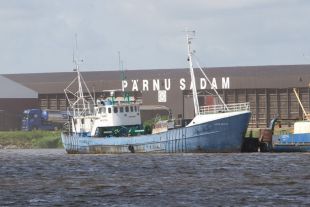Estonia, EU – Baltic States, Good for Business, Port, Railways, Transport
International Internet Magazine. Baltic States news & analytics
Friday, 26.04.2024, 05:47
Port of Parnu may become goods gate for Rail Baltic import material
 Print version
Print version |
|---|
The port of
Parnu as the receiver of imported material may come into play during the years
of the railway construction as the construction of the railway section going
through Parnu County requires 564,000 cubic meters of railway ballast crushed
stone, which is likely to be imported from Finland or Sweden.
Mati Einmann, board member of AS Parnu Sadam (Port of Parnu), said that the port, through
which approximately one million tons of goods are transported annually already,
is ready even for a double increase in goods turnover.
"The fact if and how much of the material in
question will be imported through the port of Parnu is ye too difficult to
forecast," spokesman for the Estonian Ministry of Economic Affairs
and Communications Mihkel Loide said. He added that the answer to the question
how the building material will be transported should be given by the railway's
construction logistic research, which analyzes how it is the most reasonable to
build the railway, taking into account technological, logistic and
environmental opportunities.
At present a construction logistics analysis of Rail
Baltic is being carried out, but it is clear even without it that the carriage
of material to the railway corridor will significantly increase the burden of
heavy transport both in Parnu and in rural areas close to the corridor. It is
not only about the storage and distribution of the imported crushed stone, but
the transport of necessary gravel, sand, soil, equipment and workers along the
local road network.
"Of course the carriage of materials must be
thought through," Loide said. "When it comes to the logistics of
the material, it is important to bear in mind that it is best if the materials
are located close to the road corridor." One of the logistic normatives of
the construction of Rail Baltic is the derivation of materials less than 50
kilometers from the road corridor.
"The developer must restore the status of the
roads before the construction, as well as ensure access roads and vital traffic
to residents during the construction," Loide said, adding that at
present it is not known what roads and when during the years of construction
the roads will be used to carry the material.
According to the research concerning security of
supply of the construction mineral resources, altogether 1.1 million cubic
meters of construction crushed stone not produced in Estonia is needed for the
construction of the Estonian section of the Rail Baltic railway from 2020 to
2026. In terms of weight, this means 2.4 million tons of igneous rock gravel,
which makes up approximately 4-5% of the annual igneous rock gravel production of
Finland or Sweden.








 «The Baltic Course» Is Sold and Stays in Business!
«The Baltic Course» Is Sold and Stays in Business!

